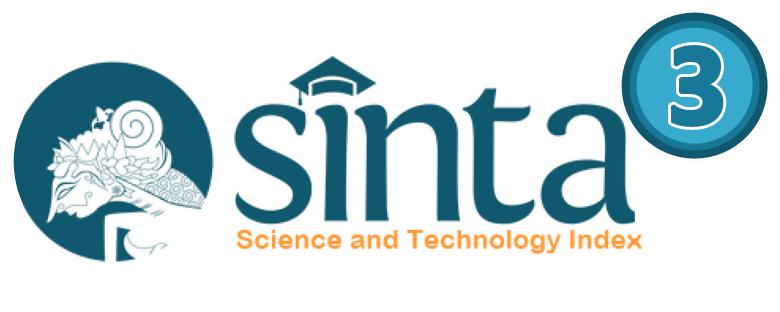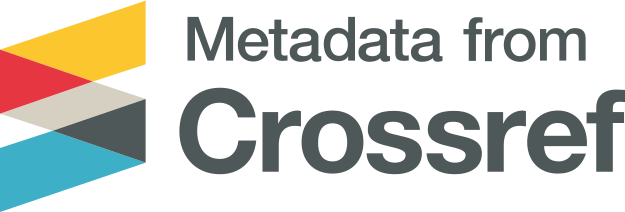Menelisik Penerimaan e-faktur versi 3.0 Melalui Pendekatan Technology Acceptance Model
Abstract views: 1032 | PDF downloads: 860
Abstract
ABSTRACT
The e-invoice 3.0 application was just introduced on October 1, 2020. Taxable employer (PKP) acceptance of e-invoice 3.0 is very important for the effectiveness of tax reporting and revenue. The Technology Acceptance Model (TAM) is employed as a theoretical framework that guides the process of data collection and analysis. A qualitative approach through in-depth interviews was carried out to PKP which is e-invoice 3.0 pilot project at the North Badung Primary Tax Office, Bali. Data were analyzed using coding and themeing technique. This study indicates that PKP has a good acceptance of the e-invoice 3.0 application. The perceptions of usefulness identified are: accelerating work, increasing performance, increasing productivity, effectiveness, making work easier, useful in monitoring data. Meanwhile, the perceptions ease of use identified are: easy to learn, controllable, clear and understandable, flexible, easy to master, easy to use, constraints quickly resolved, and intensity of use. Perceptions of usefulness and perceived ease of use can explain user attitudes and interest in using the e-invoice 3.0 application. A model that explains the acceptance of a new technology, particularly e-invoicing 3.0, is offered in this study. Some suggestions for policy makers are also provided to further improve the e-invoicing 3.0 application.
ABSTRAK
Aplikasi e-faktur versi 3.0 baru saja diperkenalkan pada 1 Oktober 2020. Penerimaan pengusaha kena pajak (PKP) atas e-faktur versi 3.0 sangatlah penting untuk efektivitas pelaporan dan penerimaan pajak. Technology Acceptance Model (TAM) digunakan sebagai kerangka teori yang memandu proses pengumpulan dan analisis data. Pendekatan kualitatif melalui wawancara mendalam dilakukan terhadap PKP pilot projecting aplikasi e-faktur versi 3.0 di Kantor Pelayanan Pajak Pratama Badung Utara, Bali. Data dianalisis dengan teknik coding dan themeing. Penelitian ini mengindikasikan bahwa PKP memiliki penerimaan yang baik atas aplikasi e-faktur versi 3.0. Persepsi kegunaan yang dijelaskan adalah: mempercepat pekerjaan, meningkatkan performa, meningkatkan produktifitas, efektifitas, mempermudah pekerjaan, bermanfaat dan monitoring data. Sementara persepsi kemudahan yang diidentifikasi adalah: mudah dipelajari, dapat dikontrol, jelas dan dapat dipahami, fleksibel, mudah mahir, mudah digunakan, kendala cepat teratasi, dan intensitas pemakaian. Persepsi kegunaan dan persepsi kemudahan dapat menjelaskan sikap pengguna dan minat penggunaan aplikasi e-faktur versi 3.0. Sebuah model yang menjelaskan penerimaan akan teknologi baru, khususnya e-faktur versi 3.0, ditawarkan penelitian ini. Beberapa saran bagi pengambil kebijakan juga diberikan untuk dapat lebih jauh menyempurnakan aplikasi e-faktur versi 3.0.
References
Amer, A.-A., Ahmad, A.-A., & Jo, S. (2013). Exploring Students Acceptance of E-learning Using Technology Acceptance Model in Jordanian Universities. International Journal of Education and Development Using Information and Communication Technology, 9(2), 4–18. http://ijedict.dec.uwi.edu/viewarticle.php?id=1617
Bahari, A., Rahman Mus, A., & Mursalim, M. (2020). Perceived Ease, Benefits and Perceived Enjoyment of E-Invoice User Interests. Point of View Research Accounting and Auditing, 1(3), 33–42. https://doi.org/10.47090/povraa.v1i3.28
Beldad, A. D., & Hegner, S. M. (2018). Expanding the Technology Acceptance Model with the Inclusion of Trust, Social Influence, and Health Valuation to Determine the Predictors of German Users’ Willingness to Continue using a Fitness App: A Structural Equation Modeling Approach. International Journal of Human-Computer Interaction, 34(9), 882–893. https://doi.org/10.1080/10447318.2017.1403220
Bhuasiri, W., Zo, H., Lee, H., & Ciganek, A. P. (2016). User Acceptance of e-government Services: Examining an e-tax Filing and Payment System in Thailand. Information Technology for Development, 22(4), 672–695. https://doi.org/10.1080/02681102.2016.1173001
Bundot, G. Y., Yunos, J. M., & ... (2017). Technology Acceptance Model Of Intention To Use ICT By Academics In Nigerian Higher Education. Online Journal for TVET …, 2(1), 3–7. https://publisher.uthm.edu.my/ojs/index.php/oj-tp/article/view/4771
Chen, C. F., Xu, X., & Arpan, L. (2017). Between the technology acceptance model and sustainable energy technology acceptance model: Investigating smart meter acceptance in the United States. Energy Research and Social Science, 25(Energy Res. Soc. Sci.), 93–104. https://doi.org/10.1016/j.erss.2016.12.011
Granić, A., & Marangunić, N. (2019). Technology acceptance model in educational context: A systematic literature review. British Journal of Educational Technology, 50(5), 2572–2593. https://doi.org/10.1111/bjet.12864
Kemp, A., Palmer, E., & Strelan, P. (2019). A taxonomy of factors affecting attitudes towards educational technologies for use with technology acceptance models. British Journal of Educational Technology, 50(5), 2394–2413. https://doi.org/10.1111/bjet.12833
Koul, S., & Eydgahi, A. (2018). Utilizing technology acceptance model (Tam) for driverless car technology adoption. Journal of Technology Management and Innovation, 13(4), 37–46. https://doi.org/10.4067/S0718-27242018000400037
Liao, S., Hong, J.-C., Wen, M.-H., Pan, Y.-C., & Wu, Y.-. (2018). Applying Technology Acceptance Model (TAM) to explore Users’ Behavioral Intention to Adopt a Performance Assessment System for E-book Production. EURASIA Journal of Mathematics, Science and Technology Education, 14(10), 1–12. https://doi.org/10.29333/ejmste/93575
Ma, Y. J., Gam, H. J., & Banning, J. (2017). Perceived ease of use and usefulness of sustainability labels on apparel products: application of the technology acceptance model. Fashion and Textiles, 4(1), 1–20. https://doi.org/10.1186/s40691-017-0093-1
Mlekus, L., Bentler, D., Paruzel, A., Kato-Beiderwieden, A. L., & Maier, G. W. (2020). How to raise technology acceptance: user experience characteristics as technology-inherent determinants. Gruppe. Interaktion. Organisation. Zeitschrift Fur Angewandte Organisationspsychologie, 51(3), 273–283. https://doi.org/10.1007/s11612-020-00529-7
Natasya, N., Tandililing, E. M., Angelus, M., & Kevin, K. (2019). Tax E-Filing System Acceptance Level on the Taxation Compliance: An Application of the UTAUT Approach. The Winners, 20(1), 33. https://doi.org/10.21512/tw.v20i1.5572
Nguyen, A. H., Nguyen, T. P., & Dang, G. T. T. (2020). Determinants of E-invoice adoption: Empirical evidence from Vietnam. Journal of Asian Finance, Economics and Business, 7(7), 311–321. https://doi.org/10.13106/jafeb.2020.vol7.no7.311
Perangin-angin, W. A., Respati, A. D., & Kusumawati, M. D. (2016). Pengaruh Perceived Usefulness Dan Perceived Ease of Use Terhadap Attitude Toward Using E-Faktur. Jurnal Riset Ekonomi Dan Manajemen, 16(2), 307. https://doi.org/10.17970/jrem.16.1602010.id
Phua, P. L., Wong, S. L., & Abu, R. (2012). Factors Influencing the Behavioural Intention to use the Internet as a Teaching-Learning Tool in Home Economics. Procedia - Social and Behavioral Sciences, 59, 180–187. https://doi.org/10.1016/j.sbspro.2012.09.263
Ratna, P. A., & Mehra, S. (2015). Exploring the acceptance for e-learning using technology acceptance model among university students in India. International Journal of Process Management and Benchmarking, 5(2), 194–210. https://doi.org/10.1504/IJPMB.2015.068667
Ratsidyaningtyas, azzilizza febri., Kartika, & Andriana. (2016). Analisis Penerimaan e-Faktur Melalui Pendekatan Technology Acceptance Model pada Pengusaha Kena Pajak ( Studi Empiris pada Pengusaha Kena Pajak yang Terdaftar Menggunakan e- Faktur Pada Kantor Pelayanan Pajak Pratama Jember ) Receptions Analyze of e-Invoi. SRA-Economic and Business Article, 1, 7. http://repository.unej.ac.id/handle/123456789/74340
Rodrigues Pinho, J. C. M., & Soares, A. M. (2011). Examining the technology acceptance model in the adoption of social networks. Journal of Research in Interactive Marketing, 5(October 2015), 116–129. https://doi.org/10.1108/17505931111187767
Sangkaew, P., Jago, L., & Gkritzali, A. (2019). Adapting the technology acceptance model (tam) for business events: The event organizer perspectiv. Event Management, 23(6), 773–788. https://doi.org/10.3727/152599519X15506259855832
Siegel, D., Acharya, P., & Sivo, S. (2017). Extending the Technology Acceptance Model to Improve Usage & Decrease Resistance toward a New Technology by Faculty in Higher Education. Journal of Technology Studies, 43(2), 58–69. https://doi.org/10.21061/jots.v43i2.a.1
Sijabat, R. (2020). Analysis of e-government services: A study of the adoption of electronic tax filing in Indonesia. Jurnal Ilmu Sosial Dan Ilmu Politik, 23(3), 179–197. https://doi.org/10.22146/jsp.52770
Soneka, P. N., & Phiri, J. (2019). A Model for Improving E-Tax Systems Adoption in Rural Zambia Based on the TAM Model. Open Journal of Business and Management, 07(02), 908–918. https://doi.org/10.4236/ojbm.2019.72062
Taherdoost, H. (2018). A review of technology acceptance and adoption models and theories. Procedia Manufacturing, 22, 960–967. https://doi.org/10.1016/j.promfg.2018.03.137
Yasa, N. N. K., Ratnaningrum, L. P. R. A., & Sukaatmadja, P. G. (2014). the Application of Technology Acceptance Model on Internet Banking Users in the City of Denpasar. Jurnal Manajemen Dan Kewirausahaan, 16(2), 93–102. https://doi.org/10.9744/jmk.16.2.93-102
Copyright (c) 2021 Ni Putu Ariasih, Luh Putu Mahyuni, Anak Agung Made Sastrawan Putra

This work is licensed under a Creative Commons Attribution-ShareAlike 4.0 International License.
Authors who publish with this journal agree to the following terms:
- Authors retain copyright and grant the journal right of first publication with the work simultaneously licensed under a Creative Commons Attribution-ShareAlike 4.0 International License that allows others to share the work with an acknowledgement of the works authorship and initial publication in this journal.
- Authors are able to enter into separate, additional contractual arrangements for the non-exclusive distribution of the journals published version of the work (e.g., post it to an institutional repository or publish it in a book), with an acknowledgement of its initial publication in this journal.
- Authors are permitted and encouraged to post their work online (e.g., in institutional repositories or on their website) prior to and during the submission process, as it can lead to productive exchanges, as well as earlier and greater citation of published work (See The Effect of Open Access).














